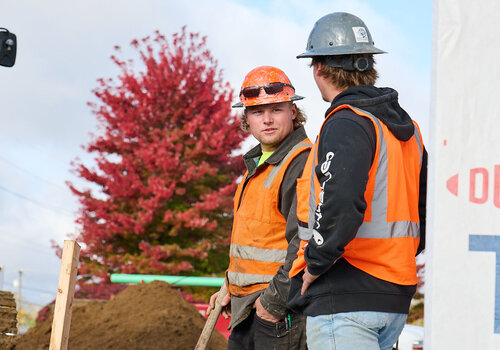Practical tips, proven strategies, and pro-level insights to maximize team performance and retention in today’s competitive market.
If you’re managing a construction company, you already feel the labor crunch. With talent harder to find, contractors need smarter strategies to get the most out of the teams they already have. Workforce management isn’t about pushing crews harder—it’s about planning better, communicating clearly and investing in people. Here’s what works today, and how you can put it into practice.
1. USE DATA AND ANALYTICS TO STAY AHEAD OF SHORTAGES
Relying on gut instinct for staffing no longer works when projects move fast and skilled labor is scarce. Analytics platforms can help contractors anticipate shortages, monitor utilization and forecast staffing needs across multiple jobs.
Arcoro’s 2025 workforce guide shows the scale of the issue: 54% of contractors say workforce shortages are now the leading cause of delays—outpacing supply chain problems.
Pro Tip: Start with what you already track. Even a simple dashboard comparing labor hours vs. budgeted hours by trade can reveal patterns. From there, adopt mobile-friendly platforms to adjust schedules in real time and reduce idle time between tasks.
2. APPLY LEAN–AGILE METHODS TO BOOST EFFICIENCY
When every worker counts, reducing waste is critical. Lean construction methods like the Last Planner System encourage crews to map out tasks weekly, align commitments and cut downtime. Agile frameworks, meanwhile, emphasize adaptability—adjusting scope and schedules quickly as conditions change.
A July 2025 Buildings study demonstrated that blending Lean and Agile approaches, supported by BIM, boosted project flexibility and reduced coordination breakdowns.
Pro Tip: Pilot a short “daily huddle” at the start of shifts. Keep it under 10 minutes. Use it to review safety, flag bottlenecks and realign crews. Small rituals like this keep communication flowing and problems visible before they escalate.
3. BUILD AN AGILE WORKFORCE, NOT JUST BIGGER HEADCOUNTS
Hiring more people isn’t always realistic when demand outpaces supply. Deloitte’s 2025 outlook reports the industry averaged 382,000 monthly job openings over the past year, underscoring the need for agility over volume.
Concrete strategies contractors are using now:
-
Cross-train workers so they can flex between roles—e.g., operators trained on multiple machines.
-
Create “swing teams” of versatile workers you can shift quickly between sites.
-
Use task-specific certifications to validate multi-skill capabilities.
Pro Tip: Look for hidden talent in your own ranks. An experienced carpenter may be eager to learn estimating or site safety. Developing those skills internally can save you months of searching for new hires.
4. TRANSFORM HR FROM PAPERWORK TO PEOPLE STRATEGY
Turnover and retirements remain a real threat. Automating HR frees managers to focus on retention. Platforms now handle onboarding, compliance, and scheduling digitally, cutting admin time while improving accuracy.
Concrete moves you can make today:
-
Digitize onboarding to get new hires into the field faster.
-
Offer flexible pay options (like weekly pay cards) to improve retention.
-
Run anonymous surveys quarterly to spot issues before workers walk.
Pro Tip: Even small recognition programs—like crew-of-the-month shoutouts—boost morale. Workers who feel seen are far less likely to leave.
5. INVEST IN WORKFORCE DEVELOPMENT TO SECURE THE FUTURE
Recruiting fills today’s gaps, but training builds tomorrow’s leaders. Apprenticeships, mentorships and leadership pathways keep people loyal and prepared for more responsibility.
Companies that offer structured career development are better positioned to attract and retain scarce skilled talent.
Concrete steps to try:
-
Partner with local trade schools or high schools for pipeline programs.
-
Pair new hires with mentors for their first 90 days.
-
Rotate rising leaders through estimating, safety and project management tasks to build breadth.
Pro Tip: Promote training wins internally. Highlight when a worker earns a new certification or completes an apprenticeship. It signals opportunity and encourages others to invest in themselves.
FINAL THOUGHTS: MANAGING SMARTER, NOT HARDER
With nearly half a million new workers needed annually just to meet demand, contractors can’t afford to approach workforce management casually.
Effective workforce management isn’t about squeezing more from crews—it’s about empowering them to do their best work, building loyalty and running projects with precision.
Contractors who put these strategies in place today will be the ones delivering projects on time, on budget and ahead of the competition.
Take your workforce to the next level with tips on how to acquire and keep the best skilled labor. And don’t miss CONEXPO-CON/AGG 2026 where workforce sessions like these will provide insights that last for years.
Photo Credit: Photo Courtesy CONEXPO-CON/AGG 365












